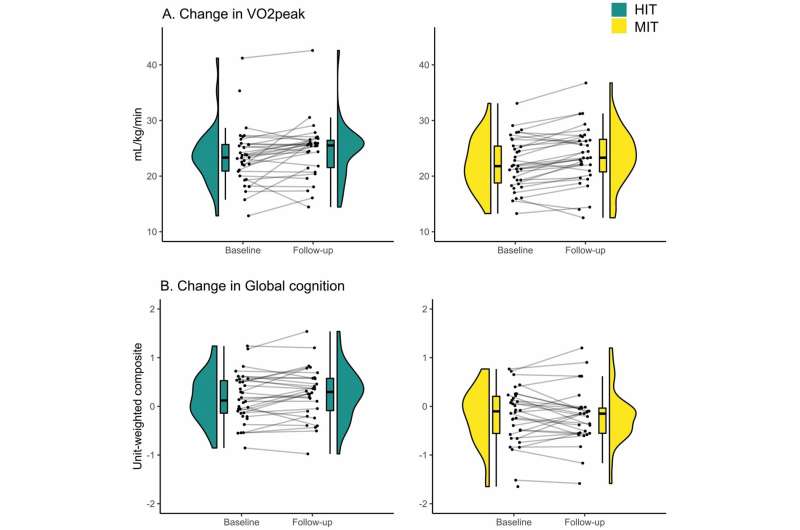This article has been reviewed according to Science X's editorial process and policies. Editors have highlighted the following attributes while ensuring the content's credibility:
fact-checked
trusted source
proofread
High-intensity exercise shown to be beneficial for untrained older adults

High intensity exercise (HIT) in untrained older adults had similar positive effects on oxygen uptake and blood pressure as Moderate Intensity Exercise, (MIT), despite half the exercise duration. HIT also led to a greater improvement in knee muscle strength and working memory.
Physical activity has very important effects on the majority of health factors for the increasing proportion of older people in our society. However, a major public health problem is that many older people are physically inactive.
HIT with very short intervals is a new training method that is believed to have major health effects. Despite promising results in younger people, there is a lack of good quality studies on HIT in older people.
"Through several pilot studies, our interdisciplinary research group has developed a method adapted for older people by individually regulating the training intensity," says Erik Rosendahl, professor at the Department of Community Medicine and Rehabilitation.
Assessment of physical conditions
Included in the study were 68 elderly women and men who did not exercise regularly. They were randomized to the HIT (ten controlled 6-second cycle sprints, total training time 20 min) or to the control group (medium-intensity continuous training, total training time 40 min). The training was carried out on exercise bikes in groups of 8–10 people, twice/week for 12 weeks.
"Of course we had certain exclusion criteria, and everyone was assessed by a cardiologist before the training began," says Rosendahl.
The training method was evaluated through a randomized controlled trial.
No serious complications
This type of high-intensity training, HIT, with very short intervals has previously been carried out in labs with a leader and a participant. In the new study, the group cycled in an exercise facility. It has been suggested that there could be too great a risk to carry out this training for older people.
"We have therefore developed a program that can both be carried out in groups, although each participant trains at their own intensity/resistance, and where both resistance and cycling pace are regulated, which should reduce the risk of complications. It seems to have worked well in our study, because attendance was 88 percent on average and no serious complications occurred," says Erik Rosendahl.
New studies
One result was a difference in change in working memory between groups, in favor of HIT.
"This particular difference is something that we will go ahead with and analyze more with the help of both blood data and functional brain imaging. I think understanding the underlying mechanisms is important to be able to make better recommendations regarding training methods in the future," says Carl-Johan Boraxbekk, professor of neurology with a focus on cognitive neuroscience and aging, who led the study together with Erik Rosendahl.
The research group has now started several follow-up studies.
"One is HIT Home, where together with older people we develop and evaluate different ways of high-intensity training at home. There will be different exercises than cycling, but the thinking is the same. Another one is HIT Grupp, with the goal that training facilities can include HIT cycling in the regular range," says Erik Rosendahl.
The study is published in The Journals of Gerontology: Series A.
More information: Emma Simonsson et al, Effects of Controlled Supramaximal High-Intensity Interval Training on Cardiorespiratory Fitness and Global Cognitive Function in Older Adults: The Umeå HIT Study—A Randomized Controlled Trial, The Journals of Gerontology: Series A (2023). DOI: 10.1093/gerona/glad070




















